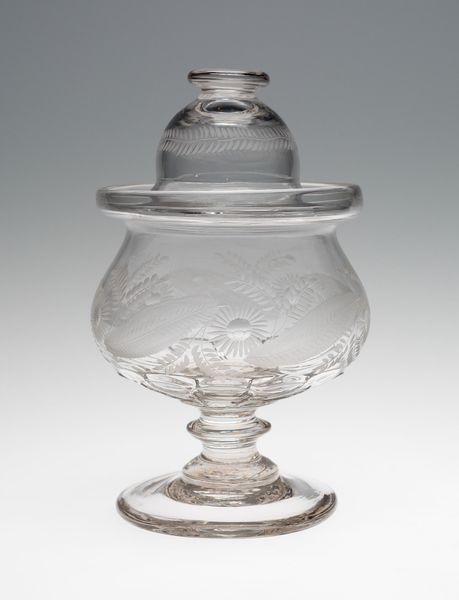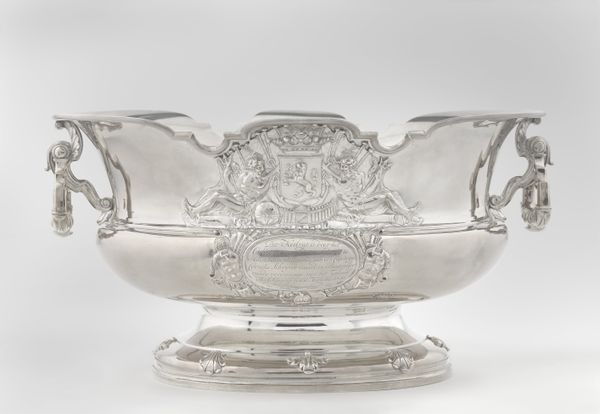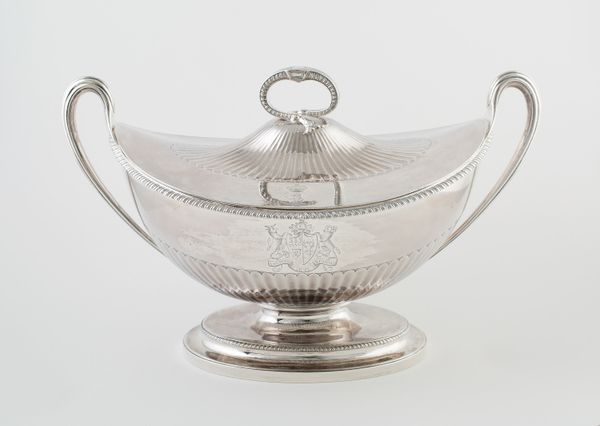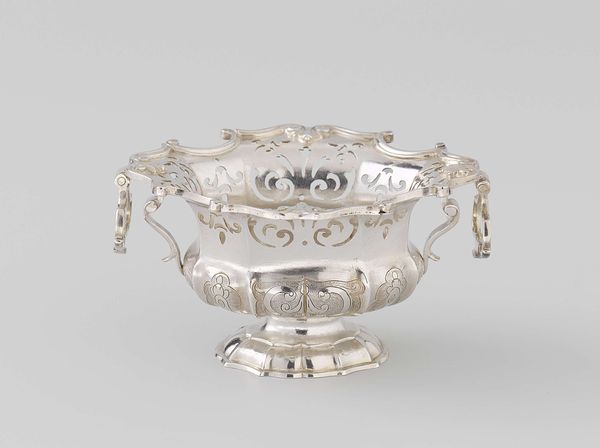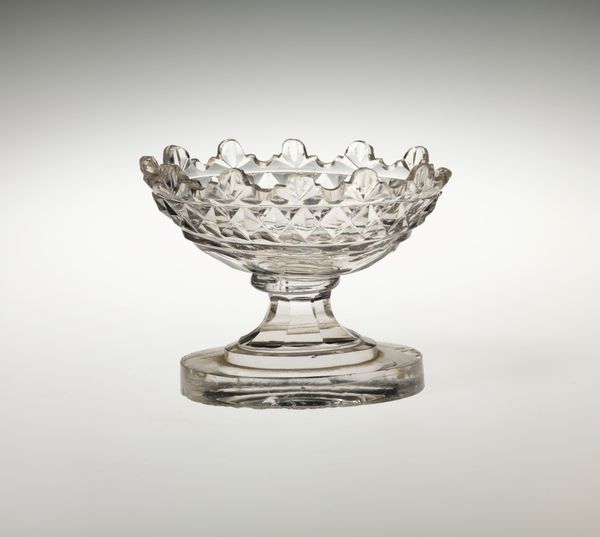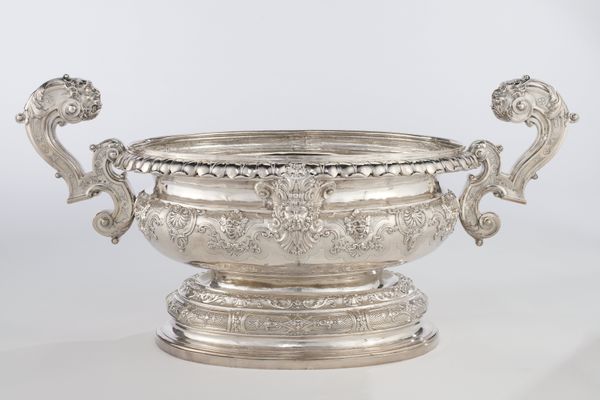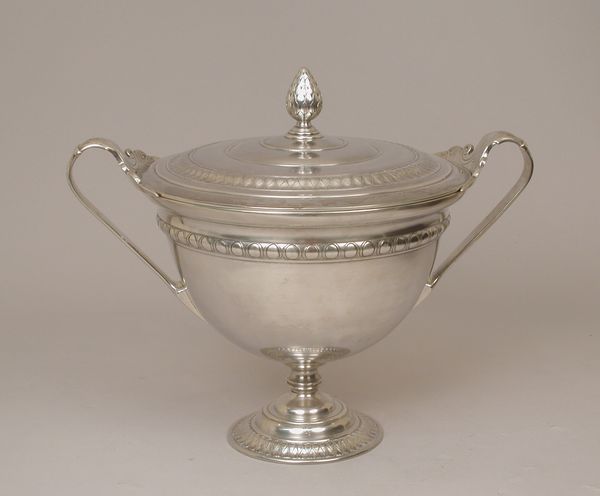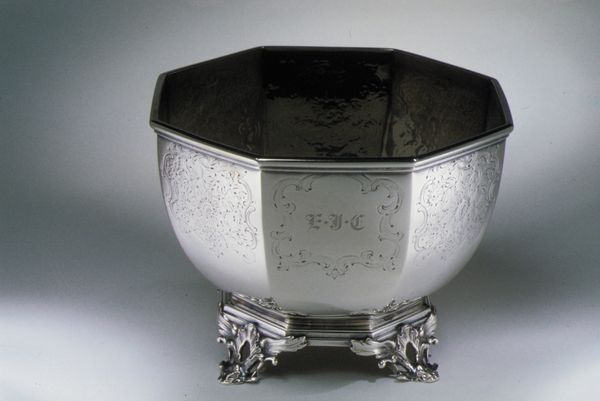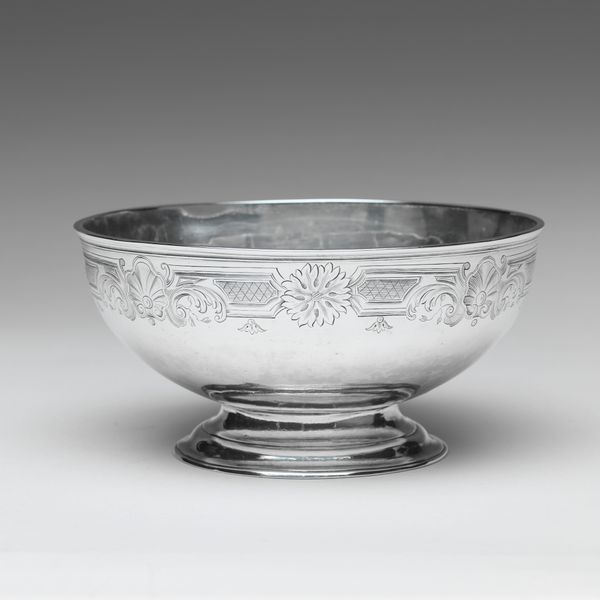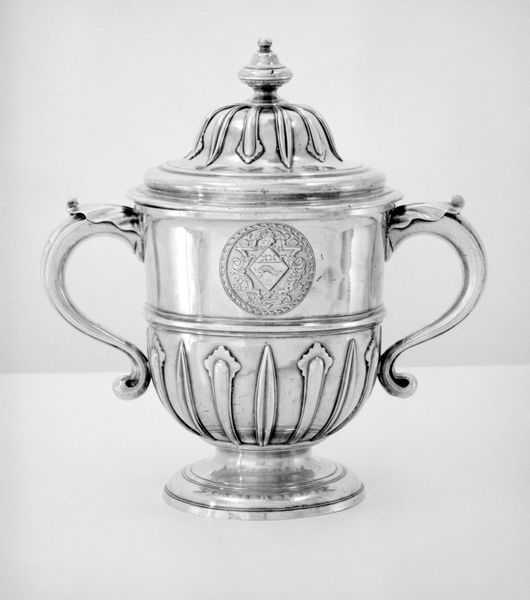
silver, metal, sculpture
#
silver
#
baroque
#
metal
#
sculpture
#
decorative-art
Copyright: Public Domain
This covered sugar bowl was crafted in Boston by Jacob Hurd, a prominent silversmith of the 18th century. In colonial America, objects like this weren't mere commodities; they were potent symbols of wealth and status. The sugar bowl, in particular, speaks volumes about the evolving tastes and social hierarchies of the time. Sugar, once a rare luxury, became increasingly accessible due to the brutal economics of the transatlantic slave trade. Owning a vessel like this, especially one adorned with a family crest, signaled one's place within the upper echelons of colonial society. Hurd’s craftsmanship reflects not only his skill but also the aspirations of his clientele. These objects were often commissioned by merchants, landowners, and other members of the elite seeking to emulate European gentility. The bowl's presence in a museum today invites us to consider the complex interplay between art, commerce, and the social conditions that shaped early American life. By examining probate records, merchant ledgers, and genealogical histories, we can better understand the world in which this sugar bowl circulated, and the values it embodied.
Comments
No comments
Be the first to comment and join the conversation on the ultimate creative platform.

